Japan Eyes Turning C-2 Cargo Jets Into Standoff Missile Carriers
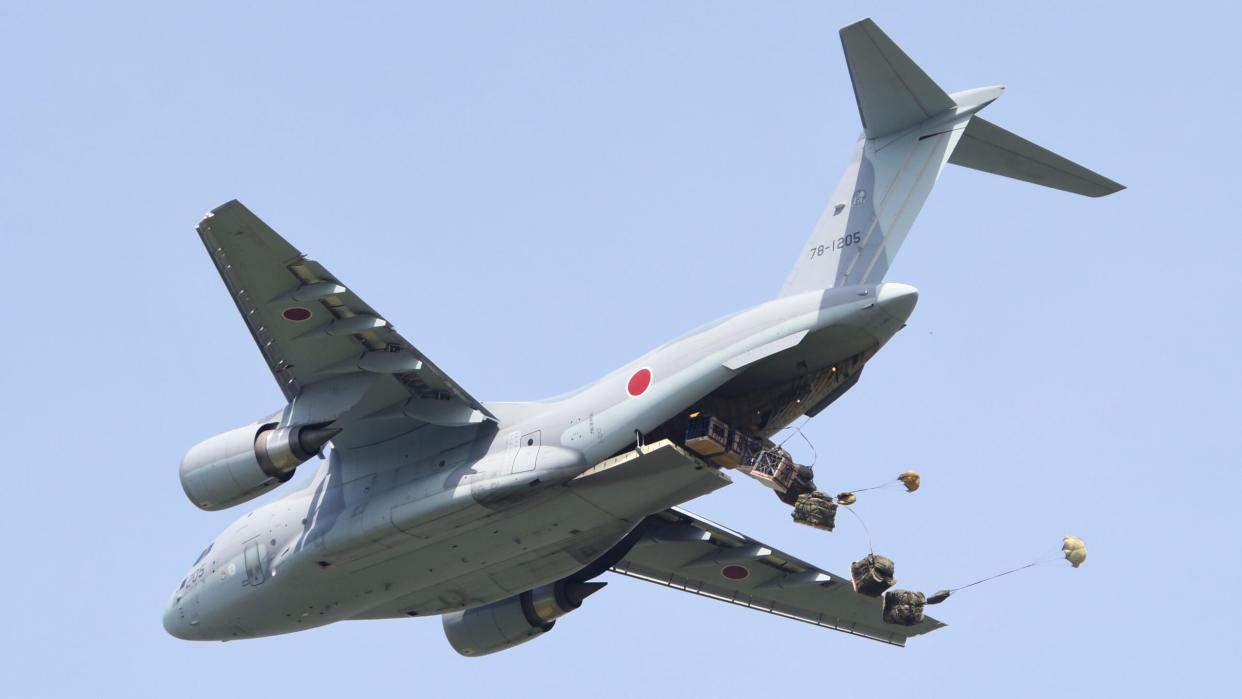
Japan has confirmed that it’s considering arming its Kawasaki C-2 military transport jets with air-launched standoff missiles, as it seeks to expand its long-range strike options. If Japan follows through with the plans, it will join the U.S. military, which is currently experimenting with adding a standoff attack option to existing transport fleets.
Known as Rapid Dragon, the U.S. initiative is a means of rapidly and cost-effectively boosting this kind of capability, without the need to acquire and deploy more combat aircraft, especially bombers.
According to a report in the Japan Times yesterday, citing unnamed government sources, the Japanese Ministry of Defense is looking at the potential of arming its C-2s with “long-range missiles,” which would be used “to attack enemy bases such as missile launch sites in counterstrike operations.”
https://www.youtube.com/watch?v=y6OyYHl_ucI
The type of missiles Japanese C-2s might be able to launch in the future were not disclosed, although the same sources described a launch process in which the missile is first dropped during flight before its engine powers up, according to the Japan Times. The story also states that the concept Japan is looking at “does not require major modifications to aircraft” and that “the United States is developing related technology.”
This would all appear to suggest that Japan is looking either at the U.S.-developed Rapid Dragon air-launched palletized munitions concept or one that’s very similar. The Rapid Dragon concept involves multiple munitions mounted inside modular frames, which are then loaded in a palletized fashion onto a cargo aircraft with a large rear ramp, as found on the C-2.
Rapid Dragon also includes a computerized targeting system that feeds information from off-board sources and into the missiles. The concept is designed to be scalable and platform agnostic, and the U.S. Air Force has now tested it multiple times using C-17 Globemaster III and different specialized C-130 Hercules variants.
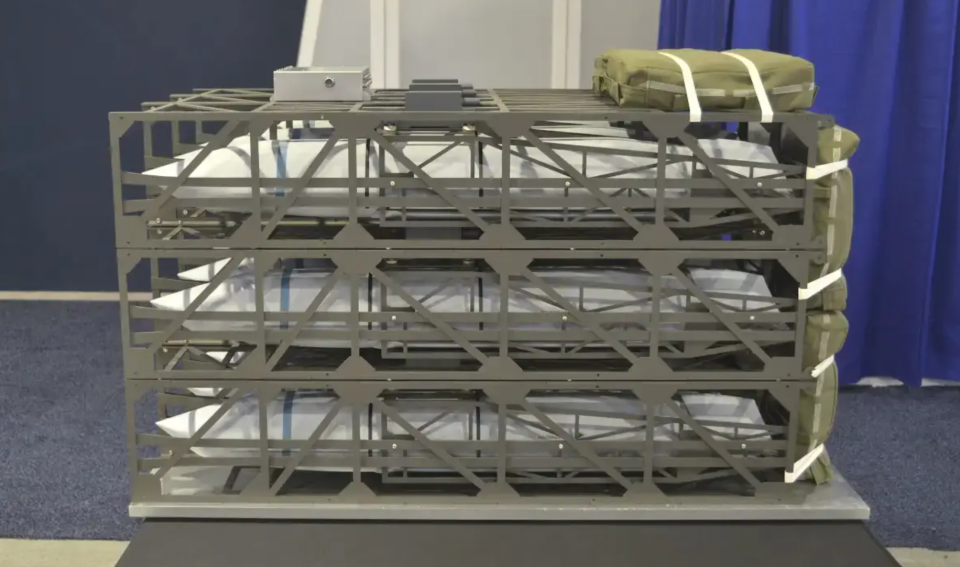
https://www.youtube.com/watch?v=2d-lQ5dUh8c
As part of its fiscal 2023 budget, the Japanese Ministry of Defense is receiving a little over $25 million to explore the concept, with a plan to continue technical research until fiscal 2024. If judged successful, full-scale development would then follow.
As for the missiles that the C-2s could carry, these will be procured off-the-shelf and the Japan Times notes that one strong contender is the U.S.-made AGM-158 Joint Air-to-Surface Standoff Missile, or JASSM family of cruise missiles. Japan is already procuring JASSM to arm its F-15 Eagle fighters, which are similarly undergoing an upgrade that includes introducing a new standoff precision strike capability. You can read much more about the scope of Japan’s F-15 modernization here.
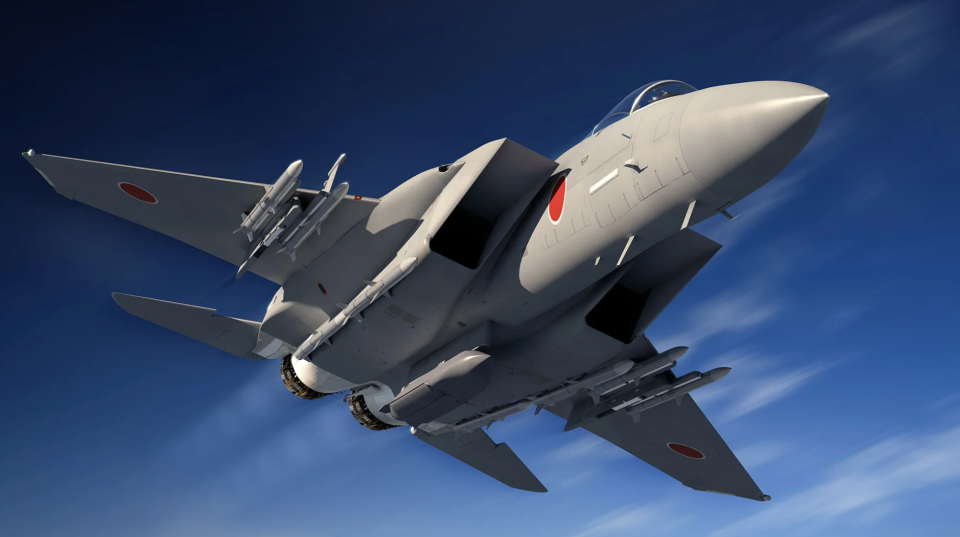
Another option would be a homegrown missile, most likely the improved version of the Type 12 anti-ship missile. This was initially fielded in a truck-mounted application, but the development of a longer-range and more advanced variant, also suitable for air launch, is now underway. The new missile is expected to have a much longer range than its surface-launched cousin, at roughly 620 miles compared to around 120 miles for the truck-mounted missile. It will also incorporate stealthy features to make it much harder to detect and defeat. However, the air-launched missile is not expected to be available until fiscal 2028, which might make the JASSM a more realistic prospect, at least in the near term.
Japan is also getting the Joint Strike Missile, which is a highly-capable surface and land attack weapon that is smaller in dimensions, allowing ti be launched from the internal weapons bay of an F-35. This is another contender.
In its favor, as a launch platform for standoff missiles, the C-2 offers much greater carriage capacity than a fighter or even a maritime patrol aircraft like the Kawasaki P-1. It is also able to remain airborne for much longer periods of time than a fighter, flying farther without the need for aerial refueling support.
https://twitter.com/aviation07101/status/1286011418077167619?s=20
A key disadvantage is the relatively small number of C-2s that are actually deployed by the Japan Air Self-Defense Force (JASDF). Only around 13 of these aircraft are currently in active service, with a handful more either stored or used for test work, while one has been adapted for electronic intelligence (ELINT) gathering, as the RC-2.
Standing in the way of additional procurement is the very high cost of the C-2, with around $2.3 billion plowed into the development effort and each airframe priced at approximately $176 million, as of 2017. This means Japan has been buying these aircraft at a slow rate and the latest Defense White Paper only aims for a frontline fleet of 16. The high cost has also contributed to a failure to win any export orders which, if secured, would have helped to bring down the price.
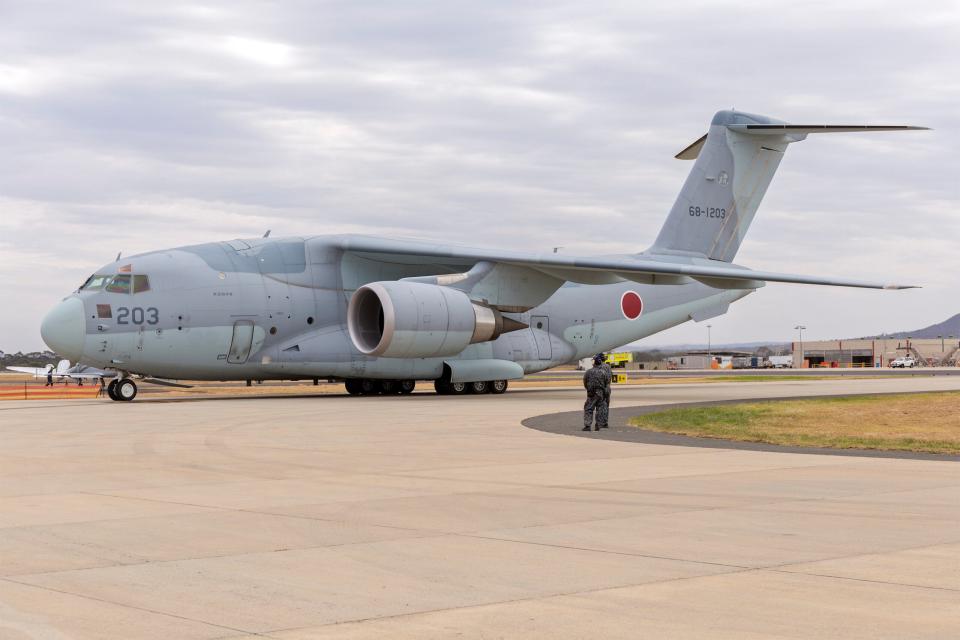
Nevertheless, with the Japanese government’s Defense Buildup Program specifically calling for “further diversifying launch platforms” as a way to bolster standoff strike capabilities, then at least looking at the C-2 as a potential ‘munitions truck’ makes a lot of sense.
A Rapid Dragon-like solution for the JASDF’s C-2 fleet, or even procurement of a version of Rapid Dragon itself, would certainly increase the options for Japan in terms of striking targets at long range. This could be particularly important in a future high-end conflict, of the kind that would be fought against China or Russia, for example, as well as contingencies involving North Korea.
https://www.youtube.com/watch?v=F0Pj-0xYFzg
As well as targets on land, using missiles from the JASSM and/or Type 12 families would also open up the possibility for attacking naval targets at considerable distances, which is also of particular concern to Japan vis-à-vis China’s expanding naval capabilities. The JASSM family includes the AGM-158C Long Range Anti-Ship Missile (LRASM), specifically for such missions.
There is nothing to indicate that the standoff munitions capability for the C-2 would be a permanent fixture, an especially important factor considering the small fleet of these airlifters. It would likely involve the same kind of roll-on/roll-off package used for Rapid Dragon. In this way, the JASDF would be able to rapidly convert a portion of its C-2 fleet into missile platforms immediately ahead of, or even during a future major conflict.
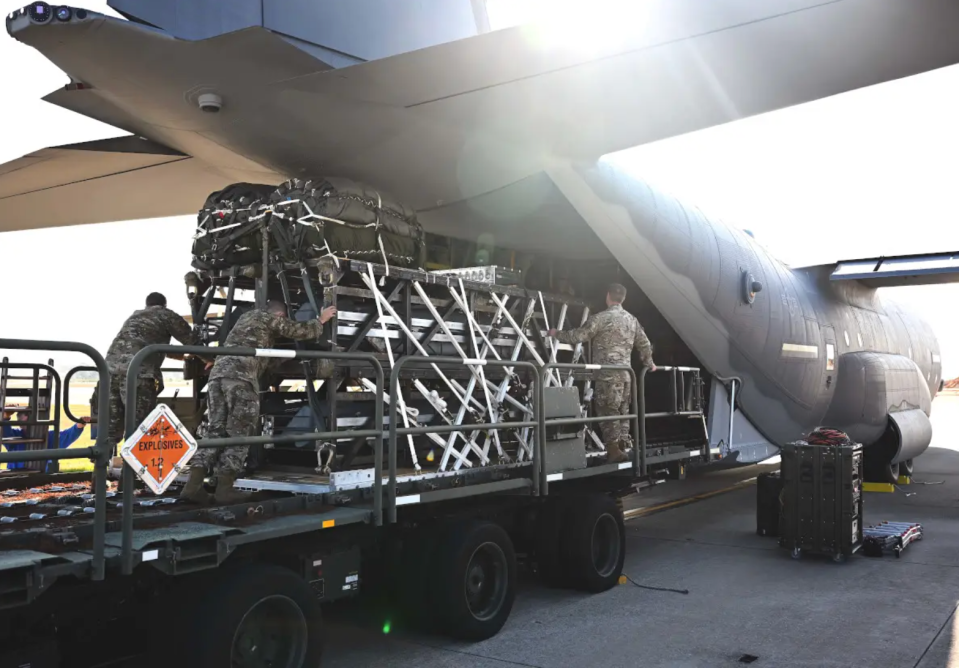
At the same time, switching even a handful of C-2s to strike missions would clearly reduce airlift capacity, even if only temporarily. This is a concern that has cropped up in U.S. studies of Rapid Dragon, too, as you can read more about here. Suffice it to say, in a full-scale conflict with China especially, the JASDF’s transport fleet would likely be in high demand to perform its primary missions. We could see Japan increase its inventory of C-2s in order to better achieve the needed capacity for the additional standoff strike mission.
Should Japan decide to adopt Rapid Dragon to meet this requirement, it would also allow for immediate interoperability. That might enable the JASDF to make use of forward-deployed U.S. Rapid Dragon systems during future coalition operations and also that Japanese C-130s might be able to employ it too. In the recent Mobility Guardian exercise in the Pacific, the Rapid Dragon was again demonstrated, with Gen. Mike Minihan, commander of U.S. Air Mobility Command, bringing up the relevance in that theater of allied C-130 fleets.
“Now the adversary has an infinitely higher problem to worry about. [They] don’t need to worry just about the bombers, [they] have to worry about this C-130 and every other C-130 on the planet,” Minihan said. “C-130s can do it. All of our partners and allies fly them, so you can give the adversary an infinite amount of dilemmas that they need to worry about.”
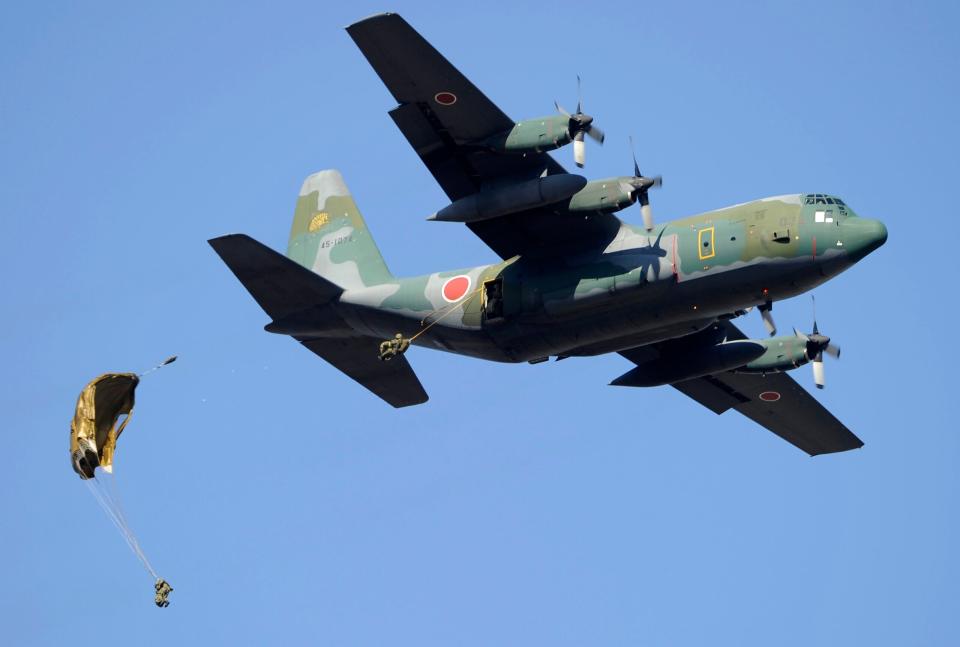
Japan's C-130s, of which there are around 14 in service, could also be outfitted with the country's Rapid Dragon-like capability, if they do not adopt the U.S. system.
As well as the standoff missiles under study, there’s also the possibility that a modular launch system could allow the C-2 to launch a range of other stores as well, perhaps even swarms of drones. This is something that is gaining increasing traction in the U.S. military, and Japan is also looking to leverage drones to a greater degree in the future. Launching throngs of electronic warfare-enabled air-launched decoys is another option.
Whatever course Japan takes with its proposal for C-2s as standoff missile platforms, it’s clear that long-range strike capabilities, chiefly to deter China, are of growing importance for the country’s defense doctrine.
In April this year, the Japanese Ministry of Defense announced contracts for four different standoff missile projects, all of them placed with Mitsubishi Heavy Industries (MHI) as prime contractor.
https://twitter.com/ModJapan_en/status/1592439564014358529?s=20
As well as development and production contracts for the aforementioned improved Type 12 anti-ship missile, these programs comprise the production of a Hyper Velocity Gliding Projectile (HVGP) and the development of a submarine-launched standoff cruise missile. The sub-launched missile is also considered likely to be based on the improved Type 12 and will similarly engage land and naval targets.
Since then, a contract has been announced for a new coastal, anti-ship cruise missile, to be produced by Kawasaki Heavy Industries (KHI), which you can read about here, and Japan is also buying “several hundred” Tomahawk cruise missiles from the United States for its surface combatants.
https://twitter.com/LokmanKaradag1/status/1637105066590240769?s=20
The news that Japan is eyeing its transport fleet for use as standoff weapons trucks also points to what we have posited will be an increasing trend among air arms big and especially small. These parallelized systems take existing aircraft and give them into the role traditionally carried out by long-range strategic aircraft — delivering standoff cruise missile attacks in large quantities over long distances. Few countries have true bomber or large cruise missile carrier aircraft in their inventories, but they do have transports and highly-capable standoff weapons like JASSM, or they can acquire the latter. Concepts like Rapid Dragon basically offer this delivery capability, at least in rudimentary fashion, at a fraction of the cost of developing, procuring, fielding and sustaining a fleet of aircraft dedicated to this type of mission. The dynamic, unpredictable, and survivable nature, as well as the range extending benefits of air launching these weapons is also undeniable. So we should be seeing much more of this in the future. Countries like Australia and those in Europe are of particular interest.
As fears of a potential Chinese campaign against Taiwan continue to mount, these are felt especially keenly in Japan, where the need to defend its southwestern islands, including the disputed Senkaku Islands, has become more important.
Indeed, with Japanese ground, sea, and air platforms all now slated to receive new standoff missile capabilities, it becomes obvious just how seriously the country is taking the growing Chinese threat in the region.
It now remains to be seen whether or not the Japanese response will also involve adapted C-2 airlifters hauling air-launched missiles in the future.
Contact the author: thomas@thedrive.com

